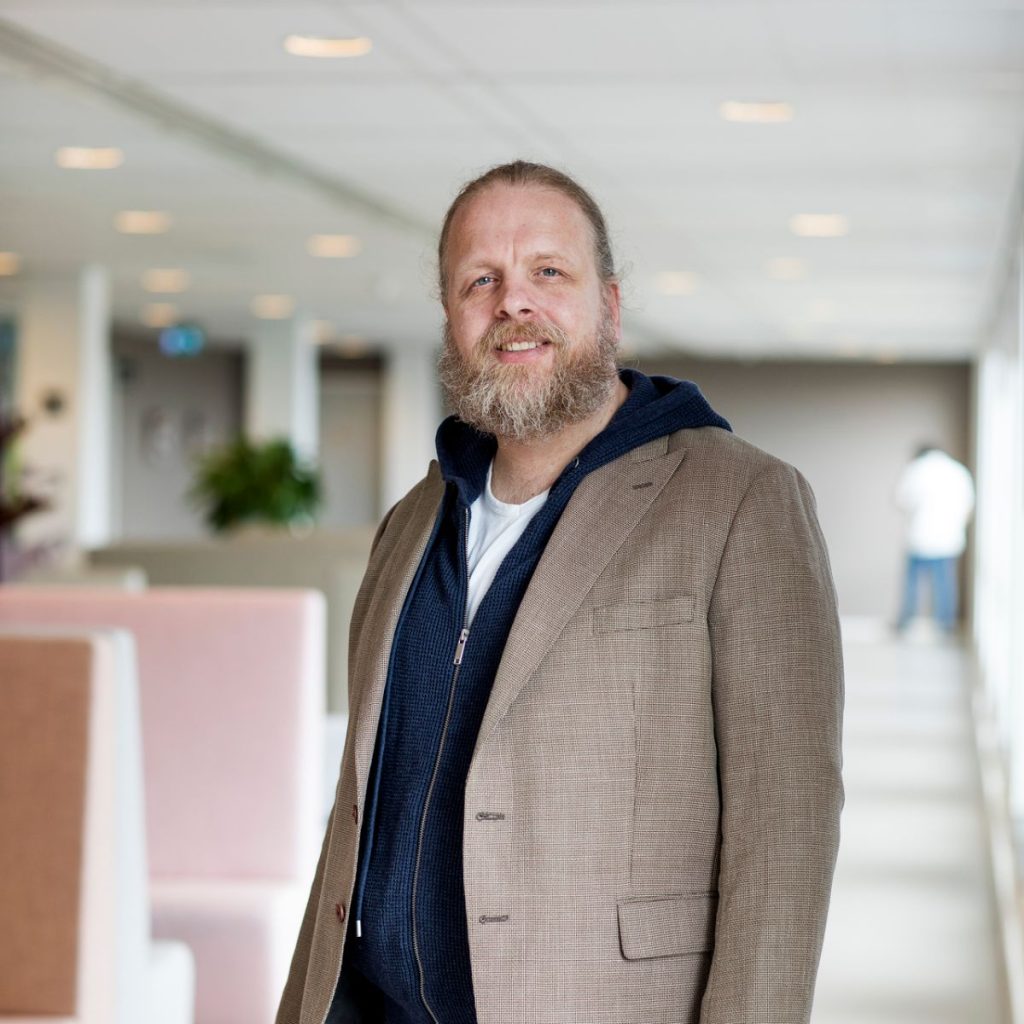Jan-Peter Doomernik: It’s about the love with which you give anything of value away.
In today’s world, energy is an indispensable part of our way of life. However, it is equally, if not more important to understand how certain technologies can innovate our energy sources and help us locate sustainable solutions and ecosystems for the world of tomorrow. Jan-Peter Doomernik is a senior business developer at the grid operator, Enexis Netbeheer, one of the Netherlands’ most critical infrastructures.
The main function of Enexis Netbeheer is to ensure a working resilient energy infrastructure. From a future perspective, they also research societal blind spots to understand the (r)evolution of the supply of basic needs. That is their definition of value. In this, Jan-Peter is responsible for safeguarding a future supply of energy from disruptive technologies or other future factors. As a grid operator, Enexis Netbeheer owns the electricity cables and gas pipes in the ground for 33 percent of the Netherlands. Experimenting with future basic needs like energy in cities is a challenge, because of restricting laws and regulations. So, Jan-Peter came up with a new way to explore resilient infrastructures: festivals.
“If you start looking for innovations in festivals that you see as moving cities,” Jan-Peter told Sonophilia, “you can disrupt all the current value chains… This moving ecosystem gives you all the opportunity to basically break out all the assumptions we have normally, and find out in [an] experiment with less boundaries, how those new ecosystems not only could work, but [are] much more resilient than what we’re used to.”
Looking at the future, new technologies deliver radical new possibilities to ensure operation. The next critical infrastructure could be much more robust. Enexis Netbeheer invests one billion euros every year in the energy system, which Jan-Peter said they depreciate over 40 years. This means they create and lock in modern energy systems.
“The billion that we invested last year is basically saying that in 2059, energy will [still] be transported via cable or via gas pipe. This is socially accepted, but the question is, will it be true? If a new profit-driven disruptive infrastructure owner could decide if people get energy or not, his leverage would be too big, because people need energy, no matter what.”
Jan-Peter’s main research focus is looking at the world through the lens of complex systems. Complex systems oftentimes behave counterintuitively, which helps in creating unimaginable ecosystems that can be built. One tangible example includes ecosystems that operate so cheaply that no company can compete.
Nature is one of his greatest inspirations, as it led to Jan-Peter’s co-creation of Nature 2.0, a term coined by fellow Sonophilian Trent McConaghy (Click here). Nature 2.0 is a community of explorers, dreamers, engineers, creatives, and developers, who aim to find possibilities in exponentially growing technologies and explore owner-less entities that operate for the betterment of society.
“We share this planet with 8.7 million animal species,” Jan-Peter explained. “They all have working ecosystems for housing, food, energy, transportation. None of those ecosystems are based on ownership [or] identity, like we use it, or on money, and still the function [is] unimaginable.”
The Nature 2.0 community was founded to bring people together to explore what technology can do for humans. They research how to enable and transition to other kinds of systems and technologies to make current solutions better. Every year, Nature 2.0 hosts a track on the biggest hackathon in the world, with over 100 participating teams.
On June 19-21, 2020, Nature 2.0 will host their track (Click here) on Odyssey.org, the biggest AI and Blockchain Hackathon in the world. It will take place in Groningen, in the Netherlands. In the nature2.ooo track, 10 international purpose-driven teams will participate with a passionate, intrinsic hunger to make the world a better place. The objective is to build the unimaginable, to envision and outline how a beneficial critical infrastructure could evolve, and to collaboratively solve complex challenges of our day. Sonophilia has played a very key role in helping Jan-Peter in his mission to find disruptive, resilient and sustainable infrastructures that are beneficial for all.
“The power and the magic of Sonophilia,” he said, “is that it is an ecosystem of all different kinds of entities… If you talk about these kinds of giant transitions that we need as a society, the picture that comes to mind is the caterpillar that becomes a butterfly… To become a butterfly, it’s not only enough to have this dream of flying, but you also have to lose this notion of wanting to be a caterpillar.”
Jan-Peter believes creativity is the essence that stems from inspiration. Asking new and unexplored questions allows him to look at a piece of the world that nobody ever considered. For him, sharing these events on the stage and hosting major hackathons ensures that creativity can thrive.
“Creativity comes from listening [and co-creation]. It’s not somebody who wants to own the value, but it is the love with which you give anything of value away, which makes the people with whom we co-create a group who’s helping each other, who’s sharing the same building blocks and just discovering the power of the digital world… I want to use it to make the world a better place.”




